Acrylic Pointillism, Oil & Coldwax, Mixed Media Original & Custom Fine Art for Your Meditation, Office or Living Spaces - Shop Online or Email for More Information
T (760) 880-8725
Email: studio@craigallenlawver.art
Craig Allen Lawver
16-566 Keaau-Pahoa Rd #188-205 Keaau, Hawaii 96749
JOURNAL : Essay
Painting in Acrylic Pointillism
Thoughts & Notes
Painting dot by dot ...
When looking at one of my acrylic Pointillist paintings, you are likely looking at ‘hundreds-of-thousands’ of individual dots of pigment. Creating art with this technique, I repeatedly, hour after hour, apply dots of paint on the surface. On complex works, I do this until there is only room enough to begin to layer dots on top of other dots.
There is, in some works, hundreds of hours of working time in a single project. The size of the dot and overall size of the piece are both determining factors. Physical size of the work impacts everything. This ranges from the degree the painting might appear impressionistic, to the number of hours needed to complete. It effects how you visually read the surface and from what distance viewing is optimized.
My first and foremost inspiration is the natural environment. Landscapes and lifeforms. Not just from a wide angle perspective, or simply the large forms of life like plants, fish, and insects. I am fascinated by minute forms. Organisms that surround us and inhabit our bodies. Consequently, I think about how these forms of life interact and react with non-living parts of the environment. Biomatter in the biosphere. Things like soil, minerals, water, air.
Conceptually, I see the dot being analogist to the molecule or atom. Both being, individual sub-units and building blocks, in something larger. Like atoms, molecules or even cells, dots of pigment join into a collective and form the whole. In theory, these units of individual color are representative of people or things in societies and systems. All part of a larger collective. It has become cliche, but nothing exists in a vacuum or is independent of anything else.
Close observation reveals surface texture. The numerous dots of divisionism impart a beaded texture. And, they invite tactile exploration. I have been told, by those looking at my work, that they want to touch it. That fascinates me. Pointillism is one of those techniques that invite the fine arts connoisseur to step both close, and afar, in visually analyzing a painting. I think this axiom is true of the world in which we exist. I reflect on this when I look at Pointillist or Divisionist works of art. When I personally work on one.
I find an analogy when seeing something through a telescope or microscope. When I step back to take in the 30,000-foot view of the thing I was just looking at. Some things disappear, others form new relationships. Ones not seen just a second ago. To be sure, there is a lot to be learned from adopting this kind of perspective and philosophy on understanding the world and our roles in it. In a like manner, my work is a small slice of that. An inviting beacon and the path of my following that kind of mental trail.
Every work contains within it a struggle. It takes both will and effort to complete a painting. I find they are relatively easy to start. The choices of color and form seem endless in the beginning. As the surface fills the options narrow and the work itself becomes more demanding. It makes known what it needs for completion. Listening closely to a work, seeing it as something more than representational, becomes crucial to a success completion. I imagine it somewhat as a living thing. A very few dots of color can ultimately define an area in an almost finished painting.
I compare acrylic pointillist painting to running up a hill. Full of breath and energy when starting out, as the climb continues, energy is sapped. There are times when I wonder if I am going to make it to the end. However, the view from the top is always worth the effort. When creating a work of art, I find the degree of effort and reward to be of equal values.
Any work is begun, by application of layers of acrylic gesso to a chosen surface. I use photos, drawings, drawings of photos and composites. After deciding on a composition or subject, I project the image onto the canvas to ensure exact position. The image and outlines are then rework with pencil. I add and subtract as the composition evolves. In short, I like to get as much of the details in place as possible. I might change my mind on particulars during the painting process, but this initial layout forms a solid roadmap.
The the next stage step is an application of color washes, blocking in and further defining areas of the painting. At this stage I might use Fleur Paint. Fleur has a great gouache-like, matte finish. It dries fast and is easily thinned with water. I may use a glaze on top of the washes to add depth and further refine the color field, but not every time.
Next, I decide on a range of colors in acrylics. I use both Nova Color and Golden Paints Heavy Body Acrylics in my Pointillist paintings. These are mixed to the desired consistency using Golden Super Matte medium and Golden GAC. I aim for a paint consistency that will hold the shape of the dot and leave the amount of texture that I want.
Lastly, I begin to apply dots of color over the entire surface of the painting surface. This is done initially in a loose, open manner. Until all areas have, a least, a few dots. The goal in this step is not to solidly define form, only to further activate the surface. I use a rubber tipped clay shaper tool, stencil brush or some other tool type instrument to do this. I continue to apply dots until I am, in actuality, filling in the spaces found in-between dots of paint, with more paint. From there, I begin to layer dots of color over the existing ones. This happens throughout the process, but at this stage, is central to the final development of the painting.
At times, I leave background space revealed between the individual dots. They remain clearly distinct and at some distance from one another. At one point in developing the technique, I was much more concerned with the integrity of the dot. I moved from inks to oils, to watercolor and inks, to acrylics. As I did so, the manner in which I felt I needed to approach each work changed. I became more flexible. This has been an evolving process.
My representational works are clearly inspired by the natural world. Flowers, landscapes, insects, fish and visible lifeforms. My abstract works are more inspired by microscopic tissues. Cells, viruses, microbes – things unseen by the unaided eye. Each informs the other. I enjoy using a dot to interpret something that exists on a very small scale. One in which things tend to go unnoticed. And then in painting, to present it in a larger than life format.
Ultimately, there is no right-or-wrong, no do-or-don’t, in how an artist can use or personally interpret pointillist painting. Allow space to exist in-between the dots of applied paint. Let the background color field open to play against the dots of color. Leave large areas free of dots of color with the background commanding its space. Fill the surface densely with dots. Work in paint, color, ink, or black and white. I find inspiration in the work of the Aboriginal Painters of Australia. They are an amazing group of painters who use a Pointillist technique, considerably.
I read, hike and travel. My artwork is informed by what is currently on my reading table. It is inspired by places that I have recently visited. I enjoy and find writing about my work to be important. In the process of writing, I can look at paintings and artworks I have made from positions of both ‘before I begin’, to ‘after completion’. I journal about that process and examine it in detail.
My library is full of books. I take copious notes when I read authors who write books on the subject’s I find interesting. These include the natural sciences, science, history, the human mind, the universe in which we exist and art of all passions. I look at the making of art, as an indispensable method and tool, in the thinking about life and my place in the cosmos.
After relocating to Hawaii, I began to build and create a body of work that was inspired by the natural scenic beauty of the islands and their various flora and fauna. These species may be endemic to the islands, but that is not always the primary consideration. These subjects fall easily into many of the existing Series of works I had begun before making the move to the Big Island. They are an extension of my ongoing studies and inquiries.


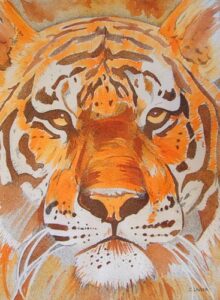
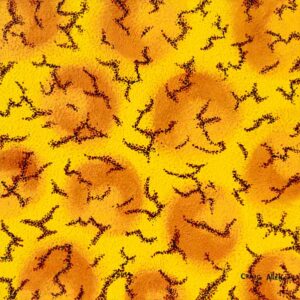
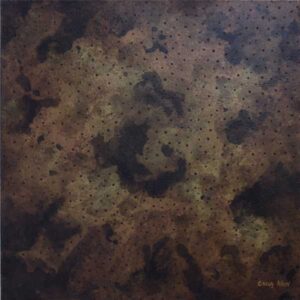
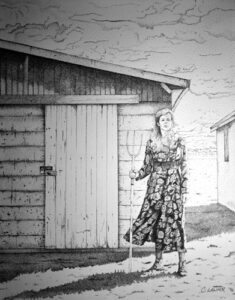
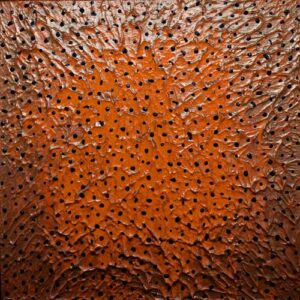
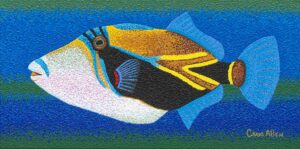
Facebook: Craig Allen Lawver Art